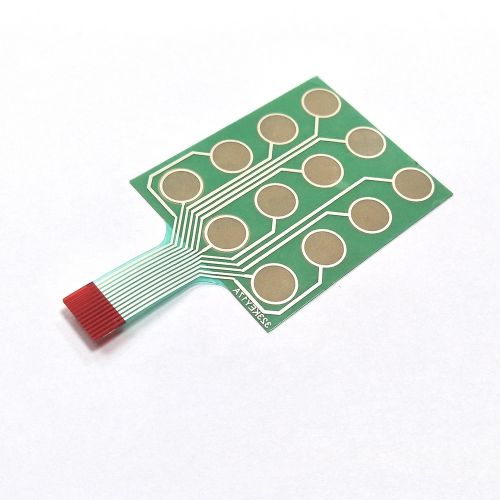Touch sensors have revolutionized user interfaces across various industries, from smartphones and tablets to household appliances and automotive controls. These intuitive interfaces have become ubiquitous, offering seamless interaction through simple gestures. In this article, we will demystify touch sensors, explore how they work, and highlight why integrating them into your business products can enhance user experience and drive innovation.
Understanding Touch Sensors
What are Touch Sensors?

Touch sensors, also known as touchscreens or touch panels, are input devices that detect and respond to physical touch or contact. They enable users to interact directly with electronic devices through gestures such as tapping, swiping, pinching, and scrolling. Unlike traditional mechanical buttons or switches, touch sensors provide a more intuitive and versatile interface.
Types of Touch Sensors
1. Resistive Touchscreens: These consist of two flexible layers coated with a resistive material and separated by a small gap. When pressed, the layers make contact, changing the electrical current and registering a touch. Resistive touchscreens are durable and cost-effective but may be less responsive compared to other types.
2. Capacitive Touchscreens: Capacitive touchscreens use the electrical properties of the human body to detect touch. They feature a transparent conductive layer (usually indium tin oxide) that stores electrical charge. When a finger touches the screen, it disrupts the screen's electrostatic field, registering a touch. Capacitive touchscreens are highly responsive and offer multi-touch capabilities.
3. Surface Acoustic Wave (SAW) Touchscreens: SAW touchscreens use ultrasonic waves that pass over the touchscreen panel. When the panel is touched, the waves are absorbed or scattered, triggering a touch event. SAW touchscreens offer excellent image clarity and durability but can be susceptible to environmental conditions.
4. Infrared (IR) Touchscreens: IR touchscreens use infrared light to detect touch events. They consist of an array of infrared LEDs and photodetectors mounted around the edges of the screen. When a finger or object touches the screen, it interrupts the infrared light beams, identifying the touch point. IR touchscreens are robust and can detect touch through gloves or non-conductive materials.
How Touch Sensors Work
Capacitive Touch Technology
Capacitive touchscreens are the most common type in modern devices due to their responsiveness and multi-touch capabilities. Here's how they work:
- Electrostatic Field: A capacitive touchscreen is coated with a transparent conductive material that stores electrical charge. This forms an electrostatic field across the screen.
- Touch Detection: When a conductive object, such as a finger, touches the screen, it disrupts the electrostatic field. This change in capacitance is detected by the touchscreen controller, which calculates the precise touch point.
- Multi-Touch Support: Capacitive touchscreens can detect multiple touch points simultaneously, enabling gestures like pinch-to-zoom and multi-finger swiping.
Controller and Interface
Behind every touch sensor is a controller that interprets touch signals and communicates with the device's operating system. The controller processes touch coordinates and gestures, translating them into commands that the device understands. This seamless integration between hardware and software ensures smooth and responsive user interaction.
Applications Across Industries
Consumer Electronics
In smartphones, tablets, and laptops, touchscreens have become the standard interface, offering intuitive navigation and enhanced user experience. Capacitive touch technology enables precise control and supports advanced gestures, making devices more versatile and user-friendly.
Automotive
Touch sensors are increasingly integrated into automotive interiors for infotainment systems, climate controls, and navigation displays. Capacitive touchscreens provide drivers and passengers with easy access to vehicle functions, improving convenience and safety on the road.
Home Appliances
Touch sensors are transforming home appliances such as refrigerators, ovens, and washing machines. They offer sleek, modern designs with intuitive controls that enhance usability and accessibility. Capacitive touchscreens are resistant to moisture and dirt, making them ideal for kitchen and bathroom environments.
Industrial and Medical Devices
In industrial and medical sectors, touch sensors are used in control panels, diagnostic equipment, and machinery interfaces. Their durability, reliability, and responsiveness make them suitable for demanding environments where precision and efficiency are critical.
Benefits for Your Business
Enhanced User Experience
Integrating touch sensors into your products improves user experience by simplifying interaction and reducing the learning curve. Intuitive touch interfaces allow users to navigate menus, adjust settings, and perform tasks effortlessly, enhancing satisfaction and loyalty.
Design Flexibility
Touch sensors offer design flexibility, allowing you to create sleek and modern product designs without bulky mechanical controls. This aesthetic appeal can differentiate your products in competitive markets and appeal to modern consumer preferences.
Increased Functionality
Capacitive touchscreens support multi-touch gestures and can accommodate complex user interactions. This enables advanced features such as virtual keyboards, gesture recognition, and interactive displays, adding value and functionality to your products.
Reliability and Durability
Modern touch sensors are designed for durability, with scratch-resistant surfaces and reliable performance in diverse environmental conditions. This robustness ensures long-term reliability and minimizes maintenance costs for your products.
Conclusion
Touch sensors have transformed user interfaces across industries, offering intuitive interaction and enhanced functionality. Whether you are designing consumer electronics, automotive systems, home appliances, or industrial equipment, integrating touch sensors can elevate your product's appeal and performance. By demystifying touch sensor technology and understanding its benefits, your business can innovate and meet the evolving demands of today's tech-savvy consumers.
Embrace the power of touch sensors to create seamless user experiences and drive business growth in a competitive market landscape. Contact us to explore how touch sensor technology can transform your products and delight your customers.
